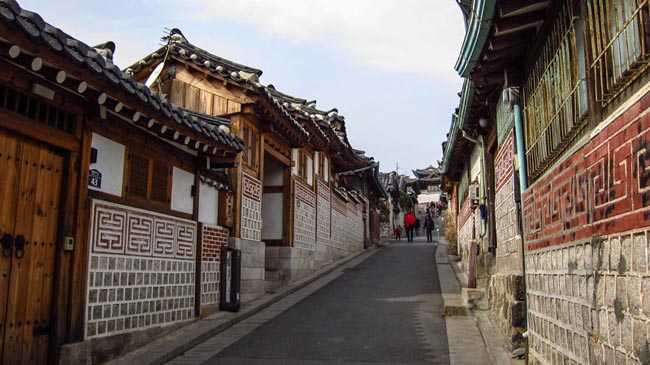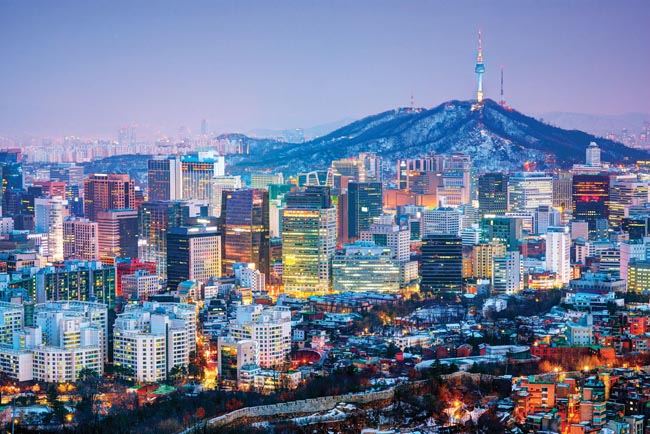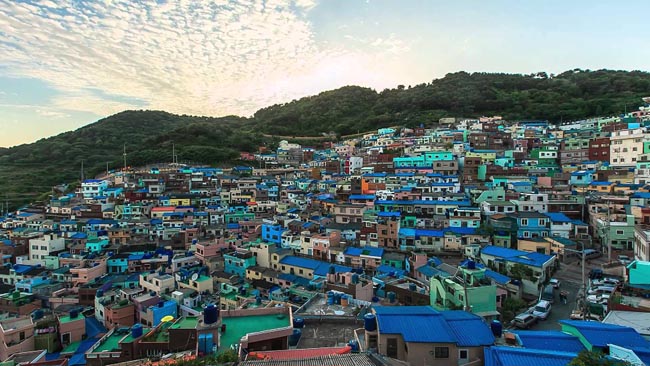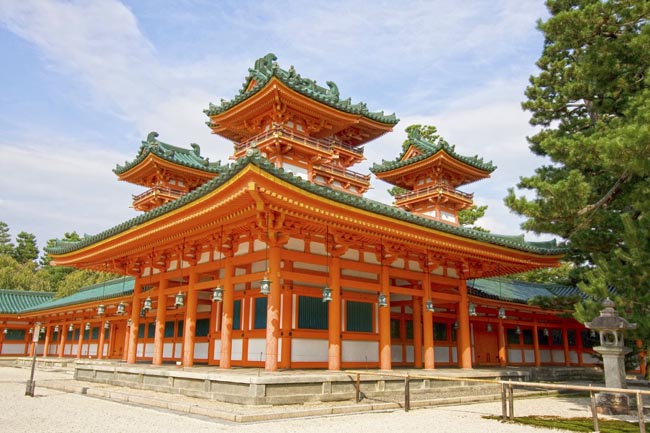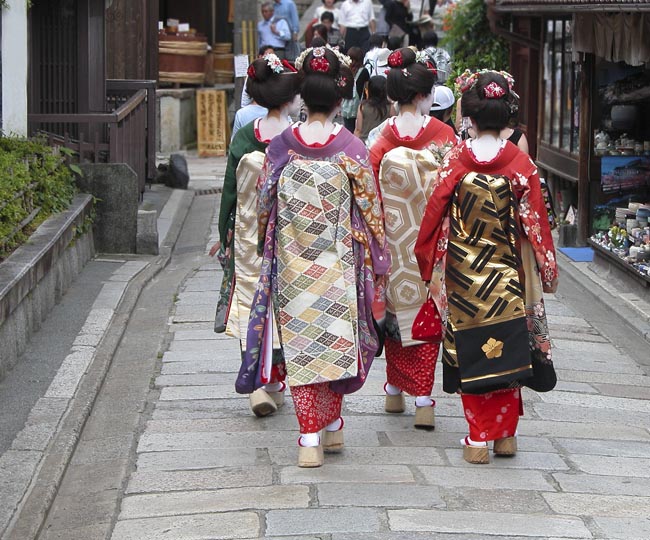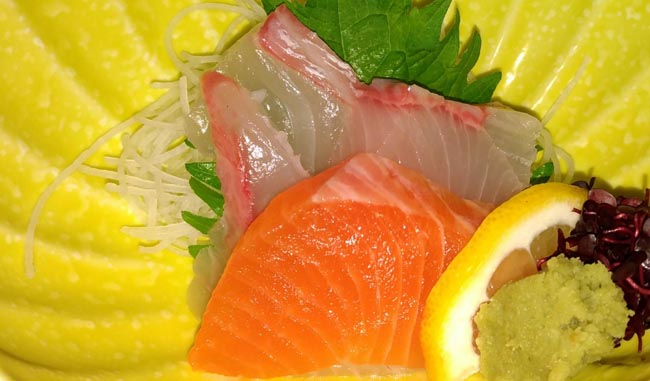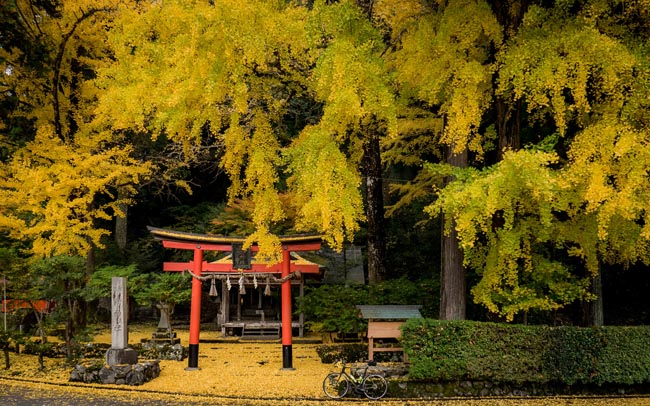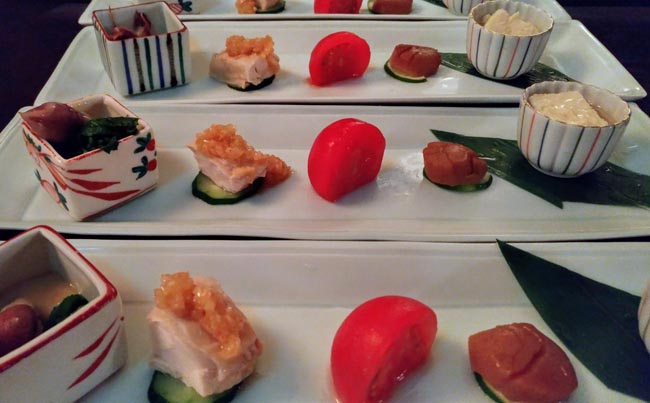This highly rewarding 20-day South Korea & Japan By Rail tour kicks off in fine style in the ancient city of Seoul, Korea, which is today one of the most populous and dynamic cities in the world.
Our city tour encompasses the presidential residence, the palaces and the museum, and we glean an even better understanding of the history of the city with a visit to the Korean Folk Village, wherein inhabitants lead traditional lifestyles and practice traditional customs.
Heading to Japan, we first stop off in Tokyo to see the largest wholesale market in the world, the Imperial Palace and the finest collection of Japanese art in the entire country.
Aboard the 'bullet train' we make headway through beautiful countryside to the mountainous Hakone region, where we see castle towns and national parks and take a funicular to marvel at magnificent views farther up the mountainside.
In the Hida area, we find a people whose long isolation due to geographic conditions has resulted in an evolution of lifestyle and culture unlike any other region in the country.
Kyoto and Hiroshima round off the Japan leg of our adventure and bring our tour to a climactic close.
Prices below are per person, twin-sharing costs in US Dollars (USD). Pricing does not include airfare to/from the tour and any applicable taxes. For single supplement rates and taxes (if any), please refer to below Prices & Dates table. For general information on flights to/from the tour, click here.
Your Travel and Accommodation Arranged For You
Tips Included for Driver, Restaurant Staff, Local Guides
Authentic Local Experiences With Lots Of Inclusions.
Select a date below to reserve your spot:
PLEASE NOTE that, due to logistical challenges and high costs in Japan, we offer customization services only for groups of minimum 10 participants plus a mandatory tour leader.
Optional Single Supplement: $1840 USD (number of singles limited).
Download Itinerary
Day 1 Arrive in Seoul
Arrive in Seoul/Incheon, South Korea and transfer to our hotel.
Seoul is a city of contrasts. In this rapidly evolving metropolis, the traditional exists with the modern in a state of harmony. For over 500 years the seat of Joseon Dynasty kings, Seoul is now the beating heart of modern Korea, the centre to which all else in the country is drawn.
Overnight in Seoul.
Included Meal(s): Dinner
Day 2 Seoul City Touring
This morning we start with a visit to Gyeongbokgung Palace, where we plan to arrive in time for the very colourful changing-of-the-guard ceremony.
Of all the tourist attractions in Seoul, the Joseon Dynasty Palaces and, particularly Gyeongbokgung Palace, are the most tangible link between modern Korea and its not-too-distant monarchical past. Not merely inert relics, they are symbols of a deep history and rich culture. Although substantially reduced in number, the remaining palace buildings provide a glimpse of traditional architecture and the overall organization of a palace grounds.
As part of our visit, we also include the National Folk Museum, contained within the palace. This excellent museum presents historical artifacts that were used in the daily lives of Korean people in the past. Through the displays, visitors can learn about the domestic and agricultural lifestyles, as well as Korea’s cultural beliefs.
After a break for lunch, we proceed to Jongmyo, a royal shrine dedicated to the performance of ancestral rites for the deceased kings and queens of the Joseon Dynasty. Being the place where the royal ancestral tablets are enshrined, Jongmyo's atmosphere is solemn and sacred rather than splendid like the royal palaces. The simple and elegant buildings of this shrine have faithfully kept their original forms since the 16th century.
We finish our day at Namsan Seoul Tower, built in 1969 as Korea's first integrated transmission tower beaming television and radio broadcasts across the capital. Since opening to the public in 1980, it has become a much-loved Seoul landmark. The tower's main attractions include multi-coloured digital art projected onto the tower at night, a digital observatory, a roof terrace, and a number of viewing platforms where visitors can enjoy the cityscape. 32 LCD screens recount the 600-year history of Seoul.
This evening we'll have our dinner at the top of the tower and enjoy a typical Korean meal and nighttime views of the city.
Overnight in Seoul.
Included Meal(s): Breakfast and Dinner
Not finding what you're looking for?
Our specialists can take away the stress and create a private custom tour tailored to your exact interests and budget.
Day 3 Seoul & The DMZ
This morning we hit the ground running with a full highlight-packed day.
After an early departure we travel along the Jayuro (Freedom Road) to Imjingak, the northernmost point bordering North Korea.* On the way, we will be able to view barbed wire fences and military guards on duty all the way along the river. At Imjingak, we visit the Mangbaedan Memorial ritual altar which was established in 1985 for those who were separated from their families or displaced from home during the Korean War. It is a symbolic spot used to hold traditional memorial services for ancestors or to pray for separated family members living in the North and for reunification of the country. We will see the Freedom Bridge, the very locale where 12,773 Korean War prisoners walked to freedom to South Korea in 1953.
We then board a tour bus that will take us to the 3rd infiltration tunnel dug up by North Koreans. On the 20-minute ride to the tunnel, we pass through the check points, military camps, and mine fields. Before going down to the tunnel, we will view a short video presentation and visit exhibition hall for information on the divided Koreas. A seven-minute tram ride (if available) or a walk down a steep access through a narrow and steep interception tunnel, leads us to the lower platform, a point where we are only 170 meters from the Military Demarcation Line.
Our next stop is the Dora Observatory where we can see the whole expanse of the Demilitarized Zone, North Korean propaganda village, Gijeong-dong, where the world's largest flag hangs on a 160 meter-tall flagpole, South Korea's northernmost village of Daeseong-dong and Panmunjom where the ceasefire that ended hostilities was signed.
We return to Seoul in time for a break for lunch in Insadong, a lively district known for it's vast array of restaurants, small museums, and shopping. Insadong was originally two towns whose names ended in the syllables "In" and "Sa". They were divided by a stream which ran along Insadong's current main street. Insadong began 500 years ago as an area of residence for government officials. Today Insadong has some of the tastiest food vendors in all of Seoul. One of the main attractions in the area is the ‘Kings Dessert’ or the ‘Dragons Beard Candy’, 16,000 strings of honey wrapped multiple times with a flavouring of either almond, peanut or chocolate on the inside. There are also gooey pancakes and spicy Korean dumplings to sample.
From here we proceed to the War Memorial of Korea, an excellent tie-in with what we experienced at the DMZ. This huge museum documents the history of the Korean War (1950–53) with documentary footage (with English commentary) of the main battles and events. Along with photos, maps and artefacts, the films give a fascinating insight into what the war was like. There's also plenty of military hardware outside – tanks, helicopters, missiles and planes, plus stirring war memorials.
* Due to an ever-changing security situation, our activities today may be altered, re-routed, or curtailed without notice.
Overnight in Seoul.
Included Meal(s): Breakfast and Dinner
Day 4 Seoul - Fly to Jeju Island
This morning we transfer to the airport for our short flight to Jeju Island.
Jeju Island, also known as the "Island of the Gods," is a popular vacation spot for Koreans and foreigners; indeed it remains the top honeymoon destination for Korean newlyweds. The island is known for beaches, rugged coastal scenery, volcanic geography, and a unique culture which stands in stark contrast to the mainland (and much of Asia) as being matriarchal. Stemming from this basis, and some odd tax reasons, the role of seafood gathering on the island has been dominated by women. As such, a common sight around Jeju's coastline is that of the "haenyo" or "woman diver", a figure that has become somewhat iconic of the island.
After our arrival we'll have a break for lunch, we visit Jeju Folk Village, a living museum showcasing traditional Jeju culture and lifestyle. The village is a collection of restored traditional Jeju houses, including thatched-roof homes and stone houses. Visitors can explore the village and learn about the daily lives of Jeju people in the past.
We also visit Jeju Stone Park, which showcases the cultural significance of stone in Jeju Province. The park features various stone structures, including a stone pagoda and traditional Jeju stone houses. It also includes a large garden themed around Jeju's mythology.
Overnight on Jeju Island.
Included Meal(s): Breakfast and Dinner
Day 5 Jeju Island Touring
Early this morning, we'll head to Sunrise Peak (Seongsan Ilchulbong) for a breathtaking view of this unique volcanic crater and its surroundings. Next we'll visit the Jeju Haenyeo Museum, dedicated to the island's remarkable female free divers. Finally, we'll explore Ilchul Land, a park featuring themed gardens, sculptures, and the intriguing Micheon Cave, a lava tube formed by volcanic activity. Jeju has an extensive system of lava tubes, natural conduits through which magma once flowed, now empty caves that are some of the largest in the world. The insides of the tube is adorned with multi-coloured carbonate decorations and innumerable cave formations commonly found in lava tubes. They include lava stalactites and lava stalagmites, lava columns, lava flowstone, lava helictites and lava blister, cave corals, benches, lava raft, lava bridges, lava shelves and striations.
Overnight on Jeju.
Included Meal(s): Breakfast and Dinner
Day 6 Jeju Island - Fly to Busan: City Touring
This morning we fly to Busan, South Korea's second largest city and largest seaport.
Busan is known for its beaches, hot springs, nature reserves, and events such as the city's renowned international film festival held each fall. Busan is a good destination for those seeking a more laid back atmosphere than Seoul. Located at the southern tip of the Korean Peninsula, Busan's important port gives the city an international flair, with sailors from around the world trooping through and a growing number of tourists.
On arrival we'll visit the Gamcheon Cultural Village (a UNESCO site), spread out in a panorama of endless rows of low-rise cubicle homes climbing up the steep hillsides, earning it the nickname "Santorini of the East." The cheerful blue, yellow and pink hues a delight to the eye. Narrow stone and concrete alleyways wind their way through the homes, yielding something new at every turn. The village used to house the city’s poorest people, but during the Korean War, refugees fled their homes for Busan, which was the only area which was free from fighting.
We'll head to the Jagalchi Fish Market for a break for lunch, followed by a visit to the impressive UN Cemetery.
Overnight in Busan.
Included Meal(s): Breakfast and Dinner
Day 7 Busan: Gyeongju Excursion
This morning we head out of the city to Gyeongju, located on Korea's southeast coast. This was the capital of the 1,000-year Silla dynasty, and is known for its extensive historical remains. We'll visit the 8th-century Bulguksa Temple featuring twin stone pagodas, a series of wooden staircases, and a large bronze Buddha.
Afer a break for lunch in Hwanglidan-gil we'll continue to Tumuli Park, which contains 23 of the over 200 royal tombs found in Gyeongju. At times, the sense of history, and of secrets buried along with the royals, is almost palpable in the quiet between the large grass-covered mounds.
We'll visit Cheomseongdae, the oldest astronomical observatory in all of Asia The 362 stones that make up the 27-level structure represent each day of the lunar year. Built during the reign of Shilla Queen Seon-deok, it was used for observing the stars in order to forecast the weather.
Our last stops include Gyeongju National Museum, largely devoted to relics of the Silla Kingdom; and Donggung Palace and Wolji Pond, once part of the palace complex of ancient Silla. Return to Busan.
PLEASE NOTE: owing to the length of the day and the probability of a busy trave day tomorrow, your Tour Leader may choose to include lunch today and leave dinner to yourselves this evening.
Overnight in Busan.
Included Meal(s): Breakfast and Dinner
Day 8 Busan, South Korea - Fly to Tokyo, Japan
Today we fly from Busan to Tokyo.
Tokyo is Japan's capital and the country's largest city. Prior to 1868, Tokyo was known as Edo. A small castle town in the 16th century, Edo became Japan's political center in 1603 when Tokugawa Ieyasu established his feudal government there. A few decades later, Edo had grown into one of the world's most populous cities.
Overnight in Tokyo.
Included Meal(s): Breakfast and Dinner
Day 9 Tokyo: City Touring
Tokyo is a dazzling modern metropolis rich in history and tradition. While the pace and the glitz of the city can be overwhelming, we will do our best to also showcase the tranquil, traditional side of the world's most populous city.
We have a private bus at our disposal today, though we may, during our time in the city, also make use of its legendarily efficient public transit system, an excellent way to observe the locals going about their daily lives in one of the world’s most vibrant cities.
We’ll kick off our morning with a visit to one of Tokyo’s venerable department stores, the earliest of which were founded during the early 1900s. Their predecessors were kimono stores, which supplied various types of luxurious goods during the Edo and Meiji periods. Japanese department stores are famous for their unparalleled customer service; we’ll aim to be there just before it opens when we will see its employees lined up neatly, waiting to welcome customers. The moment the second hand of the clock hits the opening time, the doors punctually open and customers can make a grand entrance being flanked by bowing and greeting staff.
We’ll take some time to stroll through the food halls, where you will see the amazing variety of beautifully-presented foods being sold at unbelievably high prices. Seeing where and how the Japanese shop, what they buy, for whom and for what occasion, offers instructive glimpses into a highly sophisticated social strata where conventions of human interaction and presentation are minutely-defined. Whether it be for a wedding, business meeting or returning from a trip, the culture of gift giving in Japan is one of the most prevalent in the world. However, unlike in some other cultures, in Japan the emphasis is more on the ritual of gift giving than the gift itself. This dates back to the Edo period when a lucky few would go on pilgrimages and bring back souvenirs for the villagers who weren’t able to go. You’ll have time here to pick up supplies for a picnic lunch at our next stop (a “bento box” is an excellent and convenient option).
We then move on to the East Gardens of the Imperial Palace, part of the inner palace area. The Imperial Palace, or Kokyo, built on the site of the Edo-jo Castle, is an impregnable fortress that housed the Tokugawa Shogunate for 265 years until Emperor Meiji moved the court here in 1860's. Surrounded by moats, the original outer walls extended for over 16 km (10 miles) and were thick enough for a squad of samurai to walk six abreast on top. Even in its original state, it deceptively looked more like an administrative villa than a fortress. The buildings survived until they were all but obliterated by the fire bombings of WWII. You’ll have time to explore a bit, see the iconic bridge, and to enjoy your picnic lunch in a relatively peaceful setting.
Our next stop is Meiji Shrine. Entry into the shrine grounds (a ten minute walk) is marked by a massive torii gate, after which the sights and sounds of the busy city are replaced by a tranquil forest. The approximately 100,000 trees that make up Meiji Jingu's forest were planted during the shrine's construction and were donated from regions across the entire country. At the middle of the forest, Meiji Jingu's buildings also have an air of tranquility distinct from the surrounding city.
While in the vicinity of the shrine, time- and weather-permitting, we may be able to take a stroll down nearby Takeshita Street, possibly the busiest and definitely the most colourful pedestrianized shopping street in Tokyo.
Our last stop is Ueno Park and the National Museum which, among other things, features the finest collection of Japanese art in the country. After our guided tour of the museum we will return to our hotel before our evening meal at a local restaurant.
Overnight in Tokyo.
Included Meal(s): Breakfast and Dinner
Day 10 Tokyo: Sushi Making Class
This morning we take a fascinating dive into Japanese seafood cuisine during a 3-hour combination walking tour of a local fishmarket and cooking class, where we can learn to prepare traditional style 'washoku' food items like sushi and a Japanese omelette.
We meet up with our guide in front of Tsukiji Honganji Temple, located just outside the market. Then we step inside this temple to all things seafood for an in-depth shopping session including plenty of time for photography and exploration. As you wander the aisles of this colourful and chaotic market, you’ll observe everything from giant tuna to sea urchins to octopus arranged for sale.
We'll then proceed with our guide to the gourmet cooking studio of one of Asia's largest culinary schools, boasting more than 150 studios throughout the region. Following the instruction of an experienced cooking teacher, we'll learn to prepare two 'washoku' recipes, a style of Japanese cuisine emphasizing traditional and homemade techniques. This typically includes a sushi roll along with a Japanese style omelette called Tamagoyaki, plus side dishes. This will be an excellent and fun introduction to Japanese cuisine, definitely a highlight of any trip to Japan.
We finish our session by digging into our tasty creations for lunch. We'll leave with full stomachs and a new-found appreciation for the wondrous world of Japanese cuisine and its top-notch ingredients.
Because of our late/filling lunch and full day tomorrow, and because you may be planning an evening activity before we leave Tokyo, we will leave dinner on your own account tonight. Your Tour Leader can help you plan.
Tomorrow our large luggage is transported to Hakone for us -- please pack an OVERNIGHT BAG for ONE NIGHT. Your larger bags (one per person) will be shipped ahead to Takayama, and you will need to pack an overnight bag to carry with you for the the one overnight in Hakone. Your Tour Leader will advise in advance re recommended items to have with you for the next two days.
Overnight in Tokyo.
Included Meal(s): Breakfast and Lunch
Day 11 Tokyo - Lake Ashi - Hakone
This morning we take a short metro (train) ride* to Odawara Station where we connect with our private coach towards Lake Ashi near Hakone. Shortly after we leave the station, we'll make a brief stop to see Odawara Castle (exterior visit only).
Wedged between Mt Fuji and the Izu Peninsula, Hakone is a large region encircled by several forested mountains with a beauty accented by deep glens and ravines. In the feudal era, Hakone was a very important checkpoint that safeguarded the security of Edo (now Tokyo) as the seat of the Shogunate. This onsen (hotspring) area has been popular since the 1500s, when Hideyoshi Toyotomi came here to relax in an open-air bath after the hard fought Battle of Odawara.
From the castle town of Odawara we board a bus that takes us into the National Park. We then board a lake cruiser on Lake Ashi for scenic views of the surrounding mountains. Weather permitting, we can enjoy views of Mt Fuji. One of the highlights today will be our visit to the Hakone Outdoor Museum, or Chokoku-no-mori, a beautiful park filled with sculptures by renowned Japanese and international artists such as Rodin, Bourdelle, Moore, Zadkine, and Picasso.
Tonight we will enjoy a Keiseki-type meal at our ryokan-style hotel. Originally this type of dining was to accompany tea ceremony and is a feast for both the eyes and the taste buds. You can feel free to wear your "yukata" (bathrobe - provided by the hotel) to the dining room as many of the Japanese do when they stay in ryokan, a perfectly wonderful place to relax after leaving busy Tokyo behind.
* OUR LUGGAGE will be sent ahead to Takayama for us -- please pack an overight bag for today/this evening/tomorrow (the cost of this is included in your tour). Our luggage will be waiting for us tomorrow afternoon. Please note that this service is also available elsewhere; your Tour Leader can advise/assist and payment can be made directly.
Overnight in Hakone.
Included Meal(s): Breakfast and Dinner
Day 12 Hakone - Train to Takayama
Today we travel by Shinkansen (Bullet Train) to Takayama (+/- 4 hours).
The region known as Hida, which surrounds Takayama, was cut off from the rest of Japan by almost impregnable encircling mountains. Hida lacked good farmland, which made taxpaying from an agricultural livelihood an impossible burden upon the people. Necessity caused them to diversify, so the craftsmen of Takayama honed their tools to a sharpness matched by their skills and became known as the finest woodworkers in the land. The mountains yielded the most coveted lumber in the empire, which Takayama's artisans fashioned into magnificent works worthy to adorn Japan's finest temples, shrines and palaces. During the Nara period, the central government, in lieu of taxes, required ten Takayama craftsmen to relocate to the capital, where their considerable talents were employed. During the Tokugawa era, the ancestral daimyo of Takayama was reassigned to the far north. Our train journey today takes us through the scenic Hida River Valley.
We arrive in the late afternoon and will have time to wander through the lovely town of Takayama and the merchant quarter of San-machi with its historic wooden structures.
Overnight in Takayama.
Included Meal(s): Breakfast and Dinner
Day 13 Takayama: City Tour
We start our day in Takayama by immersing ourselve in the vibrant atmosphere of the early morning market. Wander through the colourful stalls, sampling local delicacies and admiring traditional crafts.
Afterward, we travel by road to the Hida Folk Village, an open-air museum showcasing over 30 traditional houses. Here we can admire the unique gassho-zukuri architecture, with its steep, thatched roofs designed to withstand heavy snowfall, and explore the interiors to gain insights into the daily lives of past generations.
We then visit the Yatai Kaikan, a fascinating museum dedicated to the magnificent festival floats used in Takayama's annual festivals. These floats feature intricate carvings, vibrant colours, and fascinating historical significance.
Your afternoon is at leisure. Takayama is a small, interesting and manageable place for those who enjoy easy-going, on-foot exploration.
Overnight in Takayama.
Included Meal(s): Breakfast and Dinner
Day 14 Takayama - Nagoya - Train to Kyoto
Our (road) journey continues back through the Hida Valley to Nagoya from where we take the Shinkansen to Kyoto (+/- one hour).
Kyoto vibrates with creative energy. For 1,000 years, skilled craftsmen, wise masters, and the nation's most promising fine artists have been lured here. The deep impress of culture and the refinement is indelible; it's in the soul of the city. A long line of Japanese emperors was enthroned here, and the city retains this regal bearing through myriad festivals and commemorative customs preserved from feudal times. In diminutive home workshops along cobblestone alleyways no wider than a footpath, lacquerware, cloisonne, damascene, kimono fabrics, pottery, porcelain, fans, dolls, embroideries, and bamboo ware are still expertly turned out by hand. Kyoto attracts a sophisticated crowd to its vibrant Noh and Kabuki theatres, while the last geisha finishing schools are found in the lantern-lit side streets of the Pontocho and Gion sections of the city.
Thankfully, Kyoto's treasures were spared from bombing during WW II, when American scholars persuaded the military to leave this masterpiece of a city alone. Though Kyoto is now a thoroughly modern city, much of its spirit is intact, with over 200 Shinto shrines; 1,600 temples, 30 of which administer to the major sects of Buddhism throughout Japan; three Imperial palaces, nine major museums, and countless classic gardens.
We arrive in this fascinating city mid-afternoon. Tonight we will venture to the Pontocho District, one of the traditional geisha quarters of Kyoto and next door to its rival, Gion. Wandering down the narrow lanes with the Kama River flowing alongside gives a sense to what this city was like long ago.
Overnight in Kyoto.
Included Meal(s): Breakfast and Dinner
Day 15 Kyoto: City Tour
Today we have a highlight-packed full day of sightseeing in this spectacular city. Please note that the actual order of sites visited may vary from what is listed below, depending on how your Tour Leader and local guide for the day determine what is the best way to deliver the program.
We start with a quick stop at Nishi Honganji (West Honganji), a designated UNESCO world heritage site, built in 1591 by Toyotomi Hideyoshi. Nishi Honganji is the head temple of the Honganji faction of the Jodo-Shin sect with over 10,000 sub-temples across the country and 200 temples overseas. The two largest structures are the Goeido Hall, dedicated to Shinran, the sect's founder, and the Amidado Hall dedicated to the Amida Buddha, the most important Buddha in Jodo-Shin Buddhism.
We then visit Heian Shrine, built in 1895 to commemorate the 1,100th anniversary of the founding of the capital. It is a replica to three-fifths of the size of the first imperial palace in the ancient capital Heiankyo. We also visit the beautiful "go-round" style garden with a total area of 30,000 sq metres, which is well-known for the beauty of its weeping cherry trees, Japanese iris, and waterlilies.
At some point we will make a stop to acquire some picnic lunch items followed by a break, possibly combined with a walk on Philosopher's Path (Tetsugaku no michi), a pleasant route through the northern part of Kyoto's Higashiyama district. The path follows a canal which is lined by hundreds of cherry trees.
We continue to Ginkakuji, the Silver Pavillion, and then proceed to Kinkakuji, the Golden Pavilion, one of Japan's most famous architectural and historical icons. We also visit Ryoan-ji, the famous raked gravel Zen Garden, for which the Zen Buddhists are renowned. The essential dichotomy and harmony of the universe, which lies at the heart of this belief system, is symbolized in these tranquil gardens.
After a busy day, we’ll have a break before reconvening for our evening meal at a local restaurant.
Overnight in Kyoto.
Included Meal(s): Breakfast and Dinner
Day 16 Kyoto & Nara
Today we travel by local train to Nara.*
The crest of every mountain, the slope of every hill, the mute testimony of every rock, the waterfall, rivulet, and the valley of Nara are infused with the intangible spiritual energy that accompanied the birth of the Japanese civilization. Nara, meaning "level land, " occupies the great basin of what was Yamoto, or the Land of Great Peace. Here was the centre of the half-real, half mythical kingdom of Japan before it became a nation. Jimmu Tenno, the first emperor of Japan, was purportedly buried at Nara, the Imperial Japan, the oldest existing dynasty in the world, established its first permanent court within the city in 710. Arts, culture, and literature also bloomed in this fertile valley. The earliest histories of the nation were compiled in Nara by noble court ladies in colloquial Japanese, and from the ancient city Buddhism spread throughout the land.
In its glory days, Nara covered an expansive area linked by palaces, temples, shrines, public buildings, and nobles' villas. The temples were massive and extremely powerful, almost like independent city-states. Numerous fires, the ravages of time, war, and pestilence have reduced many of the ancient structures, but plenty remain in their original states, especially in the eastern sections of the city. Part of this legacy is the Great Buddha of Todai-ji Otera, the largest bronze statue in the world, tipping the scales at over 500 tonnes.
Nara Koen, at over 500 ha (1235 acres), is Japan's largest park and is home to the sacred deer of nearby Kasuga Taisha. This shrine, moss-covered and illuminated by over 3000 stone lanterns, was first erected in 768 and is second in importance only to the Grand shrines of Ise. As we walk through this park dotted with temples and deer wandering about, you will be struck at how the sublime cultural richness of the quiet past lingers on.
PLEASE NOTE that some past travellers have indicated that future participants might consider using this as a free day to do their own thing in and around Kyoto, which has much to offer even outside of our busy program. While Nara is always worthwhile and often considered a "must" while in the area, the logistics of getting to/from and the overall busy-ness of the sites visited, means that it takes an entire day to visit this one place. Those who might consider striking out on their own should consult with your Tour Leader for a complete picture of what the above described excursion entails.
Overnight in Kyoto.
Included Meal(s): Breakfast and Dinner
Day 17 Kyoto: Nijo Castle & Leisure time
This morning we visit Nijo Castle, built in 1603 as the Kyoto residence of Tokugawa Ieyasu, the first shogun of the Edo Period (1603-1867). His grandson Iemitsu completed the castle's palace buildings 23 years later and further expanded the castle by adding a five story castle keep. After the Tokugawa Shogunate fell in 1867, Nijo Castle was used as an imperial palace for a while before being donated to the city and opened up to the public as a historic site. Its palace buildings are arguably the best surviving examples of castle palace architecture of Japan's feudal era, and the castle was designated a UNESCO world heritage site in 1994.
The balance of the day is yours to explore Kyoto on your own. A good place to start may be the small Japanese garden named Shoseien, located another few street blocks east of Higashi Honganji. Your Tour Leader can help you plan your afternoon.
Overnight in Kyoto.
Included Meal(s): Breakfast and Dinner
Day 18 Kyoto - Train to Hiroshima
Today we take the Shinkansen train to Hiroshima (+/- 3 hours). Passing through Osaka and Kobe, just minutes from Kyoto on this fast train, we will arrive at our destination in just a couple of hours.
Modern Hiroshima rose like a phoenix from its own ashes. Less than five decades since its obliteration, it is once again the most vital city of San-Yo with a population of one million and growing. Hiroshima is referred to as the "River City." In its confines, the Ota-gawa River fans out into six delta tributaries that flow into the immense and very busy bay. In the years just following the A-bomb blast, scientists doubted if Hiroshima could ever live again. Today the streets hum with activity, trees and flowers grow, and birds sing. Nature may not forget, but it does forgive!
On the morning of August 6, 1945, the people of war-torn Japan hurried to begin the day. Then suddenly buildings melted, people evaporated, and humankind lost the first battle of the atomic age. Seventy thousand buildings were flattened and 200,000 people perished, the lucky ones quickly; the unlucky lingered. Hiroshima, fringed by mountains forming a natural amphitheatre, seethed and fumed.
Our visit takes us to the Peace Memorial Park (Heiwa Kinen Koen). Here the Cenotaph, shaped like an ancient tomb, holds the names of the dead. The prayer, the hope, the Japanese reads "Repose ye in peace, for the error shall not be repeated." The skeleton of the Atomic Bomb Dome (Genbaku Domu) turns green with age against a blue sky. Until all nuclear arms are banned and destroyed, the Eternal Flame will flicker. We will visit the Peace Memorial Museum and walk to the A-Bomb Dome, passing the many monuments, memorials, and statues.
Overnight Hiroshima.
Included Meal(s): Breakfast and Dinner
Day 19 Hiroshima & Miyajima
Today we travel by train and ferry to Miyajima where we spend the day.
Since ancient times, Miyajima has been regarded as one of the "Three Most Beautiful Spots" of Japan and, as part of the Seto Inland Sea National Park, it has received several distinctions, such as a place of extraordinary scenic beauty, exceptional history, and a natural monument. The virgin forests neighbouring Mt. Misen are representative of the lush greenery and abundance of nature which still covers the entire island even now. A surprisingly large number of southwestern Japan native botanical specimens can still be found on Miyajima. The island is like a miniature model of Japan, showing the harmonious ecology of all living things from the ocean depth to the top of mountains.
Our walking tour of the island will include a visit to the famous Itsukushima Shrine, which together with its large wooden tori, stands in the ocean during high tide.* You will also have some free time to admire this World Heritage Site before returning to Hiroshima.
* Please be advised that the tori may be undergoing regular maintenance at the time of our visit. This occurs every 30 years and can, depending on its needs, take anywhere from 6 months to two years to complete. Please be prepared for the gate to be either partially or completely covered by scoffolding during this time.
Overnight in Hiroshima.
Included Meal(s): Breakfast and Dinner
Day 20 Departure from Hiroshima
Departure for home.
LAND ONLY CLIENTS: You could book your return flight from Osaka or Fukuoka instead of Hiroshima, though you would have to make it late enough in the day to allow for your arrival by train on the same day. Trains are very regular and your Tour Leader will assist. Your flight from Fukuoka or Osaka should be no earlier than 4pm. YOU MAY also fly directly from Hiroshima to Tokyo and connect to homeward flights if this is easier/more economical for you (though beware of possible change of airport). Land & Air passengers may be offered this option.
Departure from Hiroshima.
Included Meal(s): Breakfast
Inclusions
Full-time Tour Leader services with local guide support.
Breakfast and most dinners (mostly at local restaurants) are included daily.
All transport, accommodation, sightseeing and entrance fees for sites noted as 'visited' in the detailed itinerary.
We include luggage forwarding services on one train journey in Japan (as per the tour itinerary); this service may be available elsewhere with your Tour Leader's assistance (payment can be made locally).
Gratuities for restaurant staff, porters, local guides.
Airport transfers for land & air customers arriving/departing on tour dates.
Exclusions
International airfare to/from the tour.
Tour Leader gratuities, lunches, drinks, personal items (phone, laundry, etc), domestic and international (if applicable) air taxes, and any excursions referenced as 'optional'.
Airport transfers for Land Only customers.
Optional trip cancellation insurance.
Our post-reservation trip notes offer further guidance on shopping, not included meals.
Seasonality and Weather
Both spring and early autumn tours can expect warm to hot temperatures with moderate humidity. April dates can expect daytime high temperatures of about 23-26C (74-78 F), with chilly mornings and evenings. Humidity is higher for our early fall (Sep/Oct) departures, with temperatures ranging from 25-30C (78-86 F). Rain showers can occur at any time, though their likelihood decreases the later we get into the fall.
Transport and Travel Conditions
KOREA: Private air-conditioned bus; internal flight via scheduled carrier.
JAPAN TRAIN TRAVEL: The tour is physical in that we move around a lot and that we rely heavily on train travel. We include baggage forwarding for the group on one occasion (Tokyo to Hakone) as it makes the most sense logistically. After this point, there is usually the option to have your bags sent ahead again, to be reunited with your bag toward the end of the following day (you will need to carry an overnight bag). As many travellers prefer to manage with their own bags, we leave the cost of forwarding to the individual, which is usually in the range of $20-25 per bag depending on bag dimensions (not by weight). Should you choose to use this service elsewhere while on tour, please confer with your Tour Leader who will make the arrangements for which you can pay locally. If you prefer to manage with your own bags, please note that Japanese stations can be large and crowded and may not have escalators or elevators. You must pack lightly, preferably in wheeled soft-sided baggage, plus a day-bag that you can fit into the overhead luggage compartments on the trains.
There is also a very strong culinary element to this trip. Breakfasts feature Asian as well as Western items, but our dinners out at local restaurants will feature a wide range of local specialties. Eating is very much a cultural experience in this part of the world, and this aspect of our program is an integral part of the overall experience. Though individual tastes and requirements will be taken into account by your leader who will be organizing our evening meals on-the-go, if you are strictly a meat-and-potatoes person, do not eat seafood, or adhere to a strict vegetarian/vegan/gluten-free etc, you may find your needs/preferences significantly challenged on this tour.
Am I suitable for this tour? Please refer to our self-assessment form.
Activity Level: 2
These are particularly busy tours that feature a lot of moving around, sometimes by train and short journeys on local transport. Walking tours of towns and cities are leisurely but you should be prepared to be on your feet for several hours. Some of our cultural trips that occur at high altitude and/or require greater independence with baggage handling (at hotels, airports, train stations) also fall into this category.
To learn more about the Activity levels, please visit our tour styles page.
Accommodation
All hotels are centrally-located, air-conditioned, 3-4 star standard with private bath facilities. We spend one night at a traditional Ryokan (in Hakone), which features tatami rooms and futon bedding. Laundry service is available at most hotels (except Hakone) for a rather high price. All hotel rooms are well equipped and usually include coffee/tea making facilities. Most hotels have hairdryers and irons. Some hotels have indoor/outdoor swimming pools.
Single rooms are limited in number and possibly smaller than twins. Porters are generally available (see 'Inclusions').
Staff and Support
Tour Leader throughout, local guides at various locations.
Group Size
Maximum 18 plus Tour Leader
Tour Extensions
This tour is part of a series that can be upgraded to make for a longer trip. For more options, please refer to tour code/s:
Tour Overview Countries Visited: 2 Acivity Level: 2 Tour Style: Cultural
For almost an entire month, our South Korea & Japan By Rail tour journeys through the myriad landscapes and fascinating cultures of South Korea and Japan, leaving no stone unturned in our mission to glean an understanding of the sociological and ethnographic inner workings of these two unforgettable destinations.
In Seoul, South Korea, our city tour takes us to the National Folk Museum and a couple of the beautiful Joseon Dynasty palaces and then we head off the beaten path to spend time in a traditional village, where buildings, dress and lifestyles are throwbacks to a long distant past.
Jetting over to Japan, we begin our next leg of the tour exploring the bustling marketplaces, palaces and beautiful gardens of the capital city, Tokyo.
Truly an assault on the senses, Tokyo is a destination that is certain to leave a lasting impression.
The 'bullet train' whisks us off to the Hakone region, a beautifully picturesque area of deep glens and ravines and as we venture into the Hida region, we find a land and people whose nature and lifestyles have remained unchanged for centuries.
Our tour of Kyoto yields the opportunity to see Sanjusangendo Temple and the 1,001 life-size statues of the Buddhist teacher Kannon and in Hiroshima, we experience the sights and sounds of a bustling metropolis that rose from the ashes of the devastation of five centuries ago to become one of Japan's most emerging cities.
We tour centuries-old castle towns, see one of the world's most active volcanoes (from a safe distance), peer into one of the world's largest calderas, and saunter the streets of Nagasaki - one of the country's most rewarding and exotic locations.
Tour Overview Countries Visited: 3 Acivity Level: 2 Tour Style: Cultural
Embark on a captivating journey through the vibrant cities and serene landscapes of East Asia. Discover the bustling metropolis of Taipei, the ancient charm of Tainan, and the dynamic culture of Seoul. Experience the tranquility of Jeju Island, the historic sites of Kyoto, and the poignant memorials of Hiroshima. From the modern marvels of Tokyo to the traditional beauty of Kamakura and Hakone, this unforgettable adventure offers a unique blend of history, culture, and natural beauty.
Tour Overview Countries Visited: 3 Acivity Level: 2 Tour Style: Cultural
Embark on a captivating journey through the diverse landscapes and rich history of East Asia. Discover the vibrant city of Taipei, the ancient charm of Tainan, and the dynamic culture of Seoul. Immerse yourself in the serene beauty of Jeju Island, the historic sites of Kyoto, and the poignant memorials of Hiroshima. From the volcanic wonders of Aso-Kuju National Park to the cultural treasures of Nagasaki, this unforgettable adventure offers a unique blend of natural beauty, historical significance, and modern marvels.
Tourism Partners

Regions visited: Far East
Countries visited: South Korea and Japan
*The red tour trail on the map does not represent the actual travel path.
The following is a list of sample hotels at some locations included on this tour. The hotels shown here are meant to provide a general sense of the standard of hotel we usually aim for; they are not necessarily confirmed for your chosen departure.

























